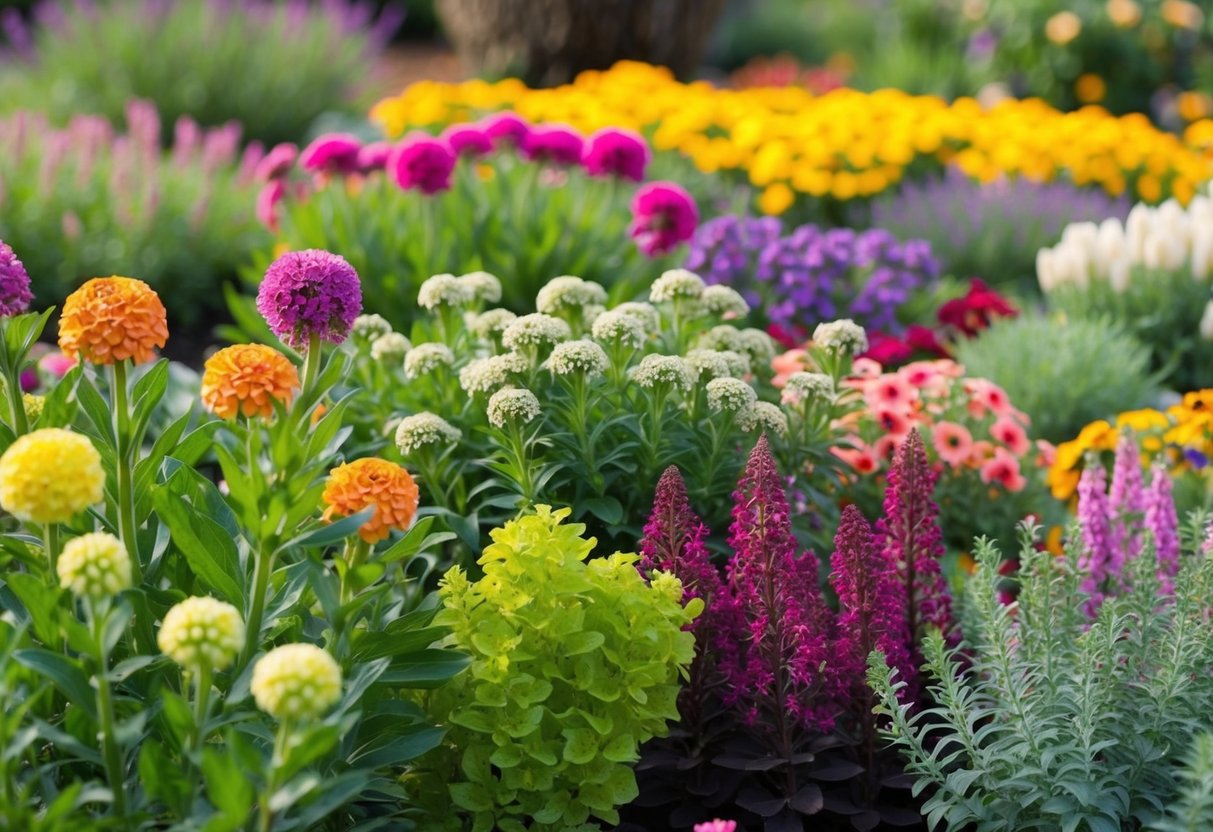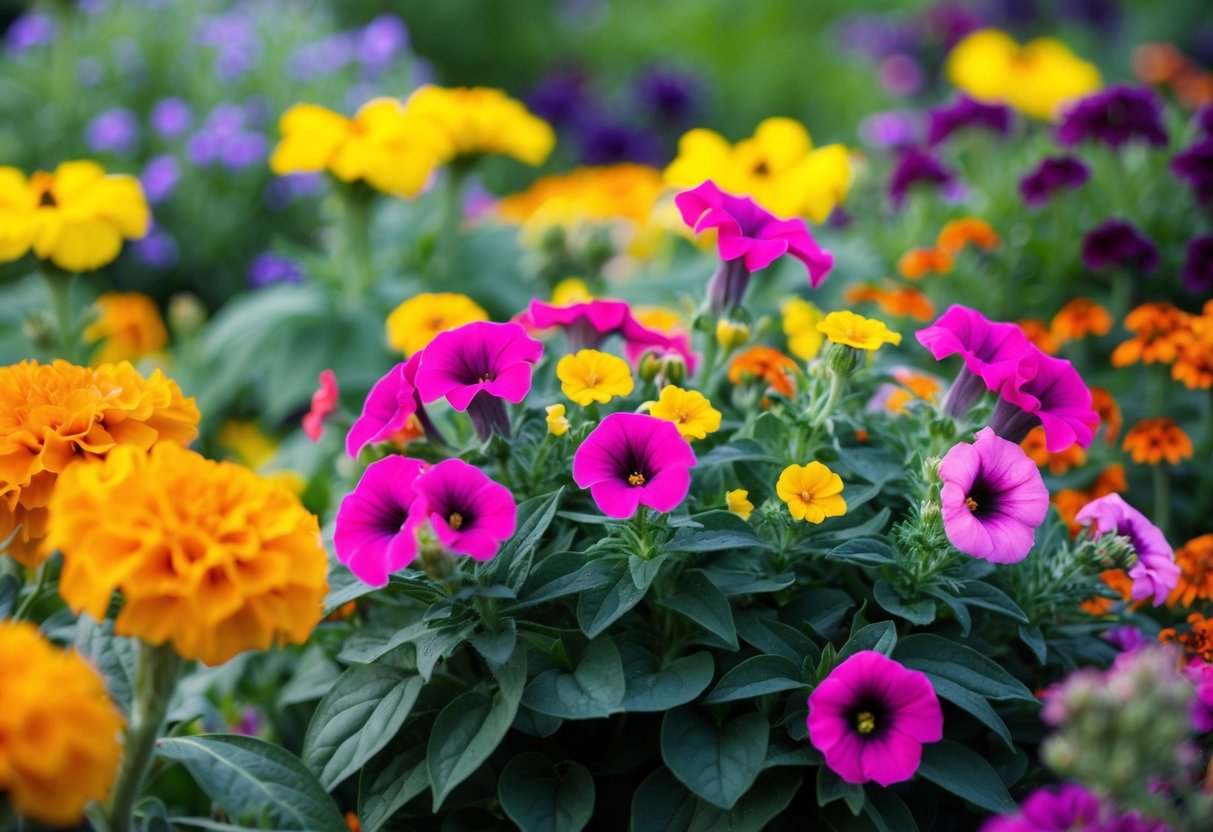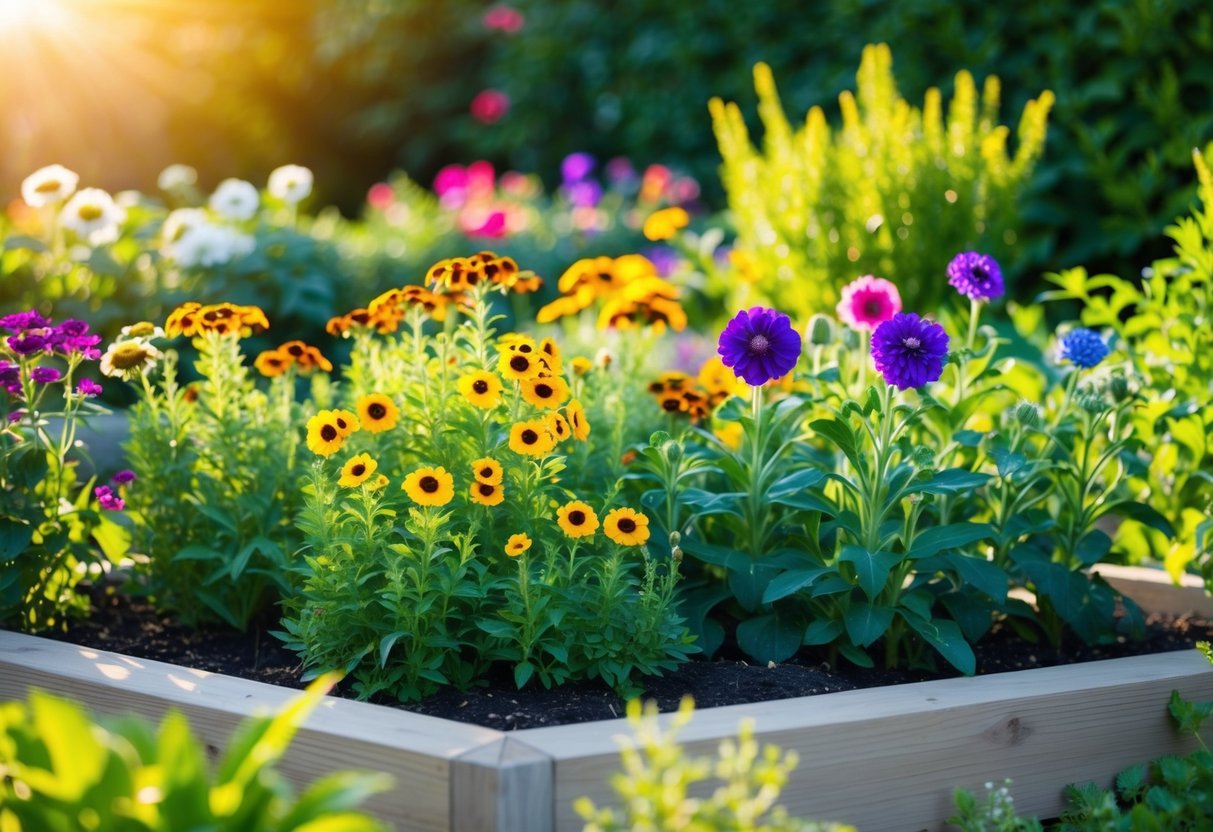What are Hardy Annuals? A Gardener’s Guide to Vibrant Blooms
When you’re planning your garden, you might wonder about the best flowers to plant that can withstand cooler temperatures. Hardy annuals are plants that grow and bloom in one growing season. They are known for their ability to thrive in colder weather. These plants are perfect for adding early color and vibrancy to your garden in the spring.

Some popular hardy annuals include snapdragons and calendulas. Snapdragons offer a variety of colors like orange, pink, and red. They are resistant to chilly conditions, but make sure they have good drainage to prevent mold. Calendulas, known for their long flowering season, can handle light frost and prefer sunny spots, making them a reliable choice for your garden.
Growing hardy annuals is an easy way to enjoy beautiful blooms with minimal effort. By choosing plants like these, you can create a stunning garden that flourishes from spring through autumn. If you’re interested in learning more about hardy plants and how to grow them, you might find helpful tips at gardens like Floret Flowers or Meadowlark Journal.
Understanding Hardy Annuals

Hardy annuals are ideal for gardeners looking for plants that can withstand chilly temperatures. These plants go through their entire life cycle in one season and are known for being resilient in the face of frost.
Defining Hardy Annuals
A hardy annual is a type of plant that completes its life cycle in one growing season. From seed to flower, these plants are built to brave colder weather. Their ability to grow even when the temperature drops makes them unique.
These plants bloom from spring to summer and then die in autumn. You typically sow them in early spring, but some hardy seeds can be planted in fall to prep for the following year. For example, snapdragons thrive in cooler temps and offer a range of vibrant colors.
Knowing when and where to plant these annuals ensures they bloom beautifully in your garden.
Benefits of Planting Hardy Annuals
Planting hardy annuals brings many benefits to your garden. One big advantage is their resistance to cold temperatures and frost, which means you can enjoy blooms early in the growing season. Hardy annuals are often the first to spice up your garden, providing vibrant colors and extended blooming periods.
These plants usually don’t need much care, making them ideal for beginners. With minimal effort, you can have a colorful garden full of life. Additionally, from flowers like sweet peas, which grow with little help, to other easy-to-grow hardy annuals, there’s a range of options to explore based on your garden’s needs.
Cultivation Practices

Cultivating hardy annuals involves specific steps that ensure healthy growth and vibrant blooms. You’ll focus on preparing the soil properly, using effective planting strategies, and providing attentive post-planting care.
Preparing the Soil
Begin by selecting well-drained soil for your hardy annuals. Good drainage prevents waterlogging, which can harm plants. Incorporate compost into the soil to add nutrients and improve texture.
Loosen the soil to a fine consistency with a spade or garden fork. This helps roots to penetrate easily. Test the soil pH and adjust it to meet the specific needs of the plants you are growing. If your hardy annuals prefer a certain pH level, adding amendments can help.
Planting Strategies
Choose the right time for planting: spring or fall. Each season offers different benefits. In spring, soils are warming, which encourages robust growth. In fall, cooler temperatures can limit pests and diseases.
Decide between direct-seeding and starting seeds indoors. Direct-seeding is simpler but ensure weather conditions are favorable. When you plant, ensure seeds are spaced according to instructions on the packet to prevent overcrowding.
Post-Planting Care
After planting, focus on providing consistent care to your hardy annuals. Regular watering is essential, especially during dry spells. However, do not overwater, as excess moisture can cause problems.
Place your plants in an area with full sun. Most hardy annuals thrive with ample sunlight. Monitor plants for signs of pests or diseases and act quickly if issues arise. Applying mulch can help retain soil moisture and suppress weeds, providing further benefits to your garden.
Popular Hardy Annual Varieties

Discover some of the most vibrant and easy-to-grow hardy annuals. These flowers add color and beauty to your garden, attract pollinators, and support local wildlife. Whether you’re interested in showy blooms or creating a haven for butterflies and bees, there’s much to explore.
Showy Flowers for Your Garden
Add a burst of color to your garden with stunning hardy annuals like larkspur and calendula. Larkspur’s tall spikes of blue, pink, or white flowers are perfect for creating a striking visual impact. Calendula, with its bright yellow and orange blooms, thrives well in most climates and is also an excellent cut flower.
Snapdragons offer a variety of hues, from deep reds to pastel pinks. Their unique flowers are a favorite for adding height to arrangements. Love-in-a-mist is another beautiful option, with delicate blue flowers surrounded by feathery foliage. Poppies, available in red, orange, white, and pink, add bold and cheerful touches to your garden during their blooming season.
Supporting Wildlife and Pollinators
You can support wildlife and help pollinators thrive by planting certain hardy annuals. Bells of Ireland are known for their green, bell-shaped blooms, which provide nectar for bees and insects. Meanwhile, snapdragons attract a range of pollinators, thanks to their tubular flowers.
Poppies are popular with bees and butterflies, offering a convenient food source. Planting these flowers not only brightens your space but also contributes to the local ecosystem. Love-in-a-mist is another excellent choice for attracting beneficial insects, creating a lively and buzzing garden environment.
Creative Uses for Hardy Annuals

Hardy annuals are versatile plants that can add vibrant colors and texture to both gardens and home settings. They are excellent for creating stunning cut flower displays and can be used in creative ways beyond traditional gardening.
In Cut Flower Gardens
In cut flower gardens, hardy annuals are true champions. Their ability to bloom early and thrive with minimal care makes them ideal for creating beautiful arrangements. Flowers like snapdragons and sweet peas come in a multitude of colors and shapes, perfect for mixing and matching.
Using different heights and colors, you can design a cottage garden style that adds charm to your space. Arranging these flowers in hanging baskets near windows or patios creates a lush and inviting atmosphere. This not only enhances the visual appeal but also allows you to enjoy their fragrance up close.
Cutting and arranging blooms from your garden ensures fresh and long-lasting floral displays. You can experiment with different combinations, adding greenery or herbs for a unique touch. Regularly picking flowers encourages your plants to produce more, keeping your garden lush and productive throughout the season.
Beyond the Garden: Other Uses
Hardy annuals are not just for flower gardens. They can also be used creatively inside your home. Use them in DIY projects like pressed flower art or dried flower arrangements. These projects preserve the beauty of your blooms long after their season ends.
Planting them in window boxes adds color to your outdoor view and improves curb appeal. Incorporate them into landscape designs for natural borders or as accents. Using hardy annuals in creative landscaping can complement structures like fences or walls, enhancing your space’s architecture.
You can also grow certain hardy annuals in pots or containers, making them portable. This allows you to move them around your home or garden as needed, depending on sun exposure or aesthetic preferences.
Annual Care Tips

Caring for hardy annuals involves managing pests and diseases, ensuring maximum blooms, and saving seeds for future planting. Each aspect plays a crucial role in maintaining healthy, vibrant plants in your garden.
Managing Pests and Diseases
To keep your hardy annuals healthy, you need to monitor for pests like aphids and slugs. You can use natural remedies such as neem oil or introduce beneficial insects like ladybugs to help control harmful pests.
Diseases like mildew can be a problem, so make sure your plants have good air circulation. Regularly check for any signs of disease and remove affected leaves immediately to prevent spreading. Proper watering is essential—watering at the base of the plant can help keep the foliage dry and reduce disease risk.
Consider creating a checklist to keep track of tasks like pest monitoring, watering, and disease management. By staying on top of these activities, you can ensure your plants stay healthy throughout their growing season.
Maximizing Blooms
Getting your hardy annuals to full bloom requires attention to certain care techniques. Provide them with well-draining soil enriched with compost. This fosters strong root development, giving plants the nutrients they need to flourish.
Pinching back tips of young seedlings encourages bushier growth, resulting in more blooms. Staking taller varieties can prevent stems from bending or breaking. Adequate spacing is key, allowing plants enough room to breathe and access sunlight.
Deadheading, or removing spent flowers, directs the plant’s energy into producing more blooms rather than seeds. This simple practice can make a big difference in the abundance and longevity of flowering throughout the season.
Seed Saving and Propagation
After your plants finish their blooming cycle, focus on saving seed heads for future planting. Allow some blooms to die back naturally, and the seeds will mature and dry in place.
Harvest them on a dry, sunny day.
Once collected, store seeds in a cool, dry place. Use paper envelopes or airtight containers to protect them against moisture.
Proper labeling with the variety and date is important for when you’re ready to sow again.
For successful propagation, pay attention to germination conditions like temperature and moisture.
Understanding each variety’s needs will improve your success rate when starting new plants from seeds.
Transplanting seedlings at the right time is vital for strong plant establishment and growth.







